|
|
The United States is likely the most diverse country in the world. Thanks to a long-held interest in welcoming immigrants and celebrating individuality, the American melting pot is overflowing. The country is poised to become a minority-majority country by 2040 and already, multicultural markets are in the majority in several states, including California, New Mexico and Texas.
Antonio Hernandez, Chair of Diversity Initiatives for PRSA Chicago, noted in a blog post for the organization that “leading brands that want to build relationships in diverse and emerging markets know it begins with recruiting, developing and retaining talent reflecting their client population.”
|
|
The same goes for consumers of travel experiences. Growing business from diverse markets is not merely a matter of talking the talk; destination marketing communicators actually need to walk the walk, and are now starting by including more diverse voices at the marketing communications table.
Having varying perspectives is crucial for making informed, strategic decisions on the right ways to attract consumers from various cultural and community backgrounds. Diverse voices bring cultural context and authenticity to communications efforts. Communications professionals with direct connections to targeted communities are more likely to have an innate understanding of what works and doesn’t in terms of effective positioning and storytelling.
Frances Wong, Senior Public Relations Manager for Visit Oakland noted, “In today’s day and age, diversity is an asset. We are selling destinations and experiences — and it’s about connecting with people. The more diverse the DMO staff, the more genuine the message will be.”
Jenea Robinson, a Senior Media Relations Manager for Visit Philadelphia, pointed out that having a staff filled with people from various backgrounds is a matter of dollars and cents. “If you don’t look at diversity in marketing from within, your organization won’t grow,” Robinson said. “Moreover, from a business standpoint, your city will miss out on a huge economic driver.”
The proof is in the statistics. According to the University of Georgia’s latest Multicultural Economy Report, total Hispanic buying power in the United States has grown from $495 billion in 2000 to $1.4 trillion in 2016. African American buying power is estimated at $1.2 trillion in 2016, and it will grow to $1.5 trillion by 2021, according to the same report.
Today, a greater percentage of the traveling public is made up of people who identify by ethnicity, sexual orientation or religion. 2016 valuations from Out Now underscore why targeting LGBT customers is smart business: in the U.S. alone, LGBT spending on travel is nearly $61 billion, with an annual growth rate of 2.5 percent.
That said, few destinations can be all things to all people, and few have the dollars to market to every single group.
“You have to look at the destination and see who you are selling it to,” Wong said. “For us, for example, the LGBT audience is such a natural element that it just happened.” Wong said that Visit Oakland set up an LGBT task force in 2016, made up of small business owners and people in the community. “We wanted to get feedback to make sure we are being sensitive and sending the right message out,” she said.
The communications team at Discover the Palm Beaches in Florida found success with a similar community-influenced strategy. As President and CEO Jorge Pesquera explained in the Palm Beach Post, “Every guest, regardless of lifestyle, race or origin, is valued and respected.”
Indeed, community outreach is a key part of the diversity effort. Kitty Ratcliffe, President of Explore St. Louis, noted the bureau has had great success by partnering with local community members and associations connected to a variety of diverse cultures. “They have a lot of insight that we won’t find out just by doing general research.” Explore St. Louis also has a multicultural committee that assists in developing and reviewing marketing communications initiatives.
Whenever Visit Philadelphia aims to target a specific audience, it starts by forming a community task force. According to Levitz, “In 2004, Philadelphia was the first DMO on the planet to air a television ad openly targeted to the LGBT community. The ad was backed up by a wider advertising and public relations campaign.”
But Visit Philadelphia didn’t start the project from scratch. “We wanted to ensure a campaign that would be serious, respectful and representative of the community,” said Levitz. That’s why, before embarking on the ad campaign, “we first established a Gay Tourism Caucus as a sounding board. We included the local business community, along with cultural and thought leaders who had interests in seeing that the LGBT market got its due.” Visit Philadelphia has used the same approach with its outreach to Latino and African American audiences — task force first, action second.
Another way to attract a diverse set of visitors is by supporting businesses and special events targeted at those markets through media relations efforts. Visit Oakland’s Wong said the bureau asks the local LGBT community about the activities they participate in and the businesses they patronize in order to develop programming of interest to that market. Visit Philadelphia’s Robinson says destination marketing organizations should “show up and support existing events within your community.” She noted that Visit Philadelphia helps special interest festivals with publicity and media outreach, and makes sure her own organization has a strong brand presence at such events.
Another aspect in diversity marketing is reaching out to consumers where they are. For example, Robinson noted that in the past five to seven years, there’s been an enormous growth in travel spending among African Americans Millennials. Studies show this group heavily consumes social media, particularly YouTube. To reach this market, Visit Philadelphia is developing a YouTube web series featuring a noted Philadelphia celebrity and several social media influencers. In other cases, DMOs can target social media influencers or reporters for traditional media outlets that appeal to specific demographics and invite them on focused press trips. The resulting coverage from respected, independent voices can spread the diversity message via objective third-party sources.
In the next twenty years, the American market will continue to evolve. Given America’s changing demographics, having diverse staff at the marketing communications table will help ensure that all destination communication is effective and that reality, not stereotypes, is presented to the majority-minority populations of today and tomorrow.
***
Karyl Leigh Barnes is Managing Partner of the Tourism Practice at Development Counsellors International (DCI).

 Karyl Leigh Barnes
Karyl Leigh Barnes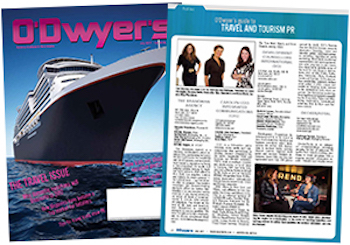

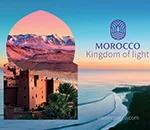 Weber Shandwick is providing PR and marketing communications services to the Moroccan National Tourist Office in New York.
Weber Shandwick is providing PR and marketing communications services to the Moroccan National Tourist Office in New York.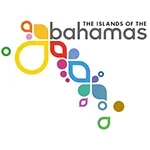 Finn Partners has filed its six-month contract with the Bahamas Ministry of Tourism, Investments & Aviation, which is worth $240K.
Finn Partners has filed its six-month contract with the Bahamas Ministry of Tourism, Investments & Aviation, which is worth $240K.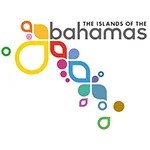 Weber Shandwick wrapped up its work for the Ministry of Bahamas at the end of 2023.
Weber Shandwick wrapped up its work for the Ministry of Bahamas at the end of 2023.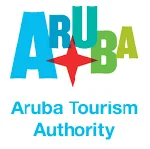 The Aruba Tourism Authority is boosting its budget 29.4 percent to $2.2M at Zeno Group, according to its 2024 contract, effective Jan. 1.
The Aruba Tourism Authority is boosting its budget 29.4 percent to $2.2M at Zeno Group, according to its 2024 contract, effective Jan. 1.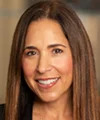 As inflation continues to impact spending, consumers are revisiting their list of what they’re willing to spend more of their money on. Luckily for those in the travel industry, experiences seem to be trending up on the “splurge” list.
As inflation continues to impact spending, consumers are revisiting their list of what they’re willing to spend more of their money on. Luckily for those in the travel industry, experiences seem to be trending up on the “splurge” list. 


 Have a comment? Send it to
Have a comment? Send it to 
No comments have been submitted for this story yet.